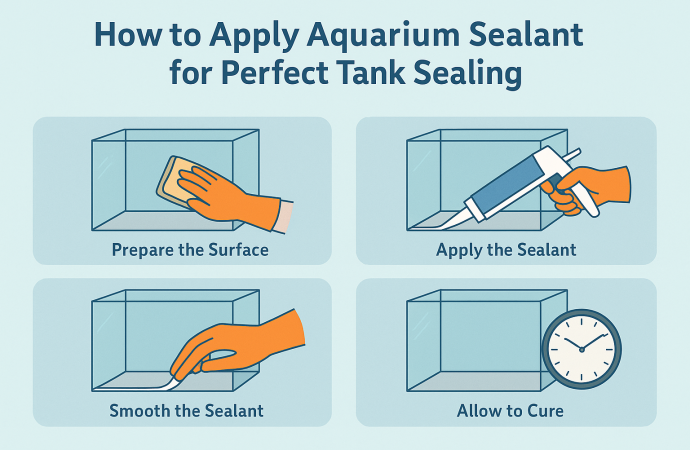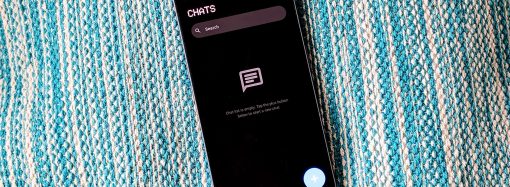Aquariums are more than just a decorative addition to your home; they are the home to your aquatic pets. Ensuring that your tank is sealed correctly is crucial to maintaining a healthy, thriving aquatic environment. Aquarium sealant is one of the most critical elements in sealing your tank effectively, preventing leaks, and maintaining structural integrity.
Aquariums are more than just a decorative addition to your home; they are the home to your aquatic pets. Ensuring that your tank is sealed correctly is crucial to maintaining a healthy, thriving aquatic environment. Aquarium sealant is one of the most critical elements in sealing your tank effectively, preventing leaks, and maintaining structural integrity. Without a proper seal, water can leak out of your tank, causing damage to furniture and creating an unsafe environment for your fish.
Whether you’re setting up a new tank or maintaining an existing one, ensuring that the aquarium is sealed correctly is vital for the safety and health of your aquatic life. This guide will walk you through everything you need to know about aquarium sealants, how to apply them, and how to maintain your tank’s seal for long-lasting durability.
What is Aquarium Sealant and Why Do You Need It?
Aquarium sealant is a specially formulated adhesive used to create waterproof seals around aquarium glass or acrylic to prevent leaks. It’s commonly used in the construction and repair of aquariums to bond glass panels together, ensuring that water does not escape from the tank.
Types of Aquarium Sealants:
- Silicone-based sealants: These are the most common and durable type of aquarium sealants. Silicone is non-toxic to aquatic life and provides a long-lasting bond.
- Acrylic-based sealants: These are specifically designed for acrylic tanks, as they offer a strong bond without damaging the acrylic material.
- Rubber sealants: Rubber-based sealants are flexible and offer great water resistance. They are often used in older tanks or tanks with specific sealing needs.
Without aquarium sealant, even a small gap or crack in your tank could lead to major leaks, which could ultimately damage your home and harm your fish. Aquarium sealants are essential for ensuring the structural integrity of your tank.
Choosing the Right Aquarium Sealant for Your Tank
When selecting an aquarium sealant, there are several important factors to consider:
- Tank Material: Glass and acrylic tanks require different types of sealants. Glass tanks generally use silicone sealants. In contrast, acrylic tanks may require a special acrylic-based sealant to prevent cracking or hazing.
- Tank Size: For larger tanks, a stronger, industrial-grade aquarium sealant is necessary to handle the increased water pressure.
- Fish Species: Ensure the sealant is non-toxic to the aquatic life in your tank. Most aquarium sealants are safe, but always check for certifications such as “fish-safe” or “aquarium-safe.”
Best Aquarium Sealants on the Market:
- GE Silicone I for Aquariums: A trusted brand for both freshwater and saltwater tanks, offering high durability.
- Aqueon Silicone Sealant: Ideal for larger tanks, this sealant is specifically designed for both glass and acrylic aquariums.
- Momentive RTV108: A professional-grade sealant used in commercial aquarium settings, known for its long-lasting hold.
Step-by-Step Guide to Applying Aquarium Sealant
Applying aquarium sealant may seem like a daunting task, but with the right tools and techniques, it’s a straightforward process. Here’s a step-by-step guide to ensure your aquarium is sealed perfectly:
- Preparation:
- Clean the tank thoroughly. Using a razor blade or scraper, remove any debris, dirt, or old sealant. Ensure that the tank surface is dry before applying the sealant.
- Gather the necessary tools: aquarium sealant, a caulk gun, a razor blade, gloves, and a paper towel.
- Clean the Tank:
- Make sure all surfaces are free of oils or dust. Rub alcohol or vinegar on the edges where you’ll be applying the sealant. This will ensure that the sealant adheres properly.
- Apply the Sealant:
- Load the aquarium sealant into a caulk gun and apply it evenly along the edges where the glass panels meet. For glass aquariums, use a steady hand to apply a thick, uniform layer along the seams.
- Use a spatula or your finger (with gloves) to smooth the sealant into the seam, ensuring there are no gaps.
- Drying and Curing Time:
- Allow the sealant to dry for at least 24 hours before touching or moving the tank. Full curing time may take up to 72 hours, so ensure the tank is undisturbed during this time.
- Test the Seal:
- Before filling the tank with water, inspect the seal thoroughly for any gaps or air bubbles. Fill the tank partially with water to check for leaks and allow it to sit for several hours.
Troubleshooting Common Sealant Issues
While aquarium sealant is designed to provide long-lasting, leak-free bonds, issues can occasionally arise. Here are some common sealant problems and how to troubleshoot them:
- Uneven Application or Bubbling:
- This can happen if the sealant is applied too quickly or if air gets trapped. Reapply the sealant and smooth it out gently to eliminate air pockets.
- Inadequate Curing Time:
- Ensure that the sealant is fully cured before filling the tank. Rushed curing can result in the sealant not bonding properly, leading to leaks.
- Leaks After Sealing:
- If you notice a leak after applying the sealant, inspect the area closely. It might be necessary to reapply sealant or use a different brand.
Maintaining Your Tank Seal for Long-Term Success
Regular maintenance is essential to ensure your aquarium seal remains intact for as long as possible. Here are a few tips for keeping your tank’s seal in top condition:
- Inspect the Seal Regularly: Look for signs of wear, such as discoloration or cracks in the seal. If you notice any damage, reapply the sealant promptly.
- Clean Carefully: Use non-abrasive cleaners and avoid scrubbing the sealant area directly. Instead, clean around it to prevent damage.
- Re-seal When Necessary: If the sealant begins to lose its bond, or if you notice any leaks, it’s time to reseal your aquarium.
Latest Trends in Aquarium Sealants and Tank Care
The aquarium industry is constantly evolving, and sealant products are no exception. Today, many sealants are designed to be more eco-friendly and safe for aquatic life. Researchers are also exploring new materials that offer even greater durability, flexibility, and resistance to harsh aquatic environments.
For example, silicone-based sealants are now being formulated with low VOCs (volatile organic compounds), reducing their environmental impact and making them safer for fish and other aquatic creatures. In addition, advancements in biodegradable and non-toxic sealants are gaining popularity among environmentally conscious pet owners.
Conclusion: Ensuring a Safe and Secure Tank Environment
Proper aquarium sealing is crucial to ensuring the safety of your aquatic pets and the longevity of your tank. By following the steps outlined above, selecting the right aquarium sealant, and performing regular maintenance, you can create a secure, leak-free environment for your fish.
Sealing your aquarium correctly not only prevents leaks but also improves the overall aesthetic and function of your tank, enhancing the well-being of your aquatic pets. Remember, a well-maintained tank contributes significantly to the health and happiness of your aquatic companions, making it a worthwhile investment in their care.
FAQs about Aquarium Sealant
- What is the best aquarium sealant for glass tanks?
- GE Silicone I is a top choice for glass aquariums due to its durability and long-lasting results.
- How long does aquarium sealant take to cure fully?
- Most aquarium sealants require at least 24 hours to dry and 72 hours to fully cure.
- Can I use aquarium sealant on acrylic tanks?
- Yes, but ensure you use an acrylic-specific sealant to avoid damaging the acrylic surface.
- How often should I reseal my aquarium?
- Resealing is typically required every 5-10 years, depending on wear and tear.
- Is aquarium sealant safe for my fish?
- Always choose non-toxic, fish-safe sealants to ensure the health of your aquatic pets.
















